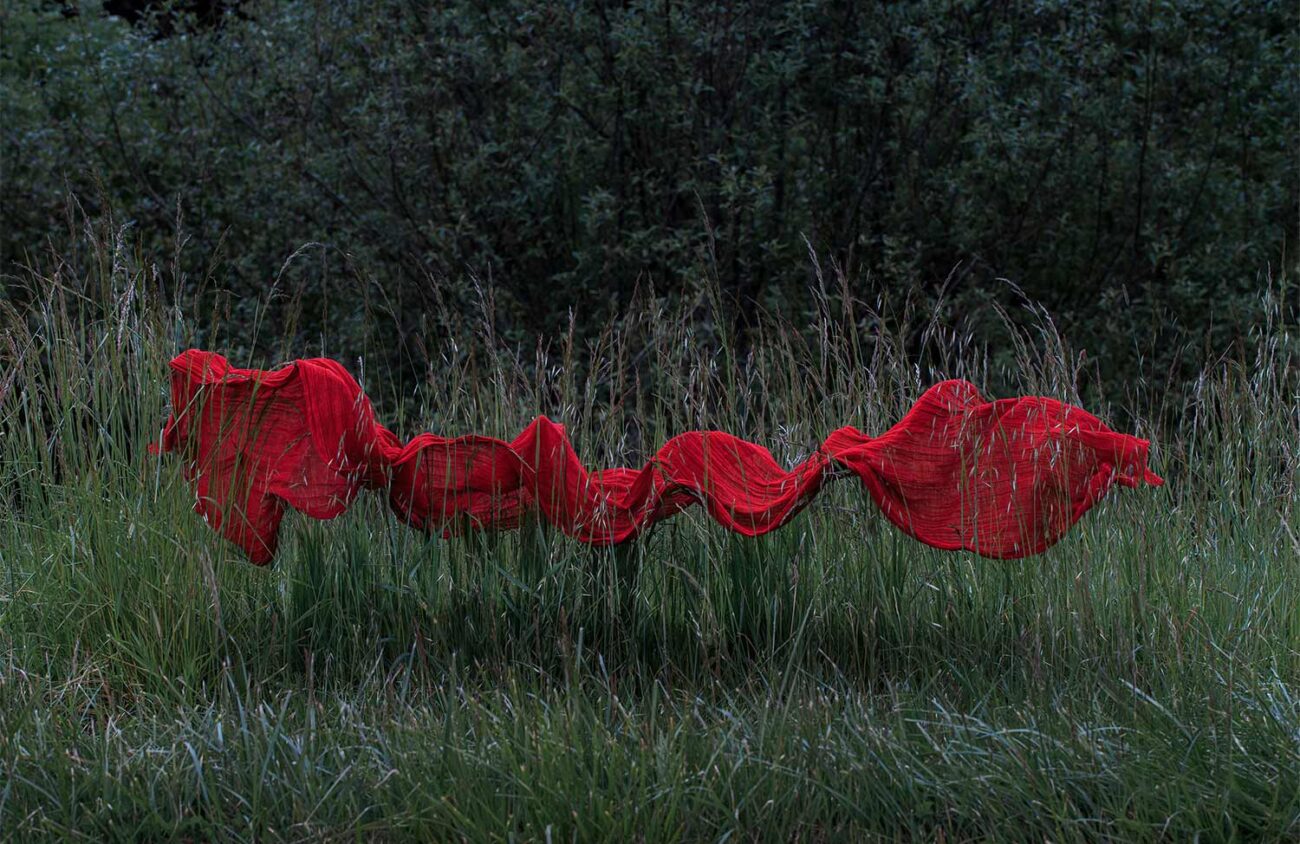Can art heal nature? The idea that it can is a driving force behind Naeemeh Naeemaei’s art, now on view until June 24 in Naeemeh Naeemaei: JAAN at the Karin Clarke Gallery.
Clarke typically exhibits “master painters of Oregon,” most of whom are drawn to landscapes. This exhibit of Naeemaei’s work is a departure, since it is photography, not painting, and the artist is from Iran. She actually resides in Chicago now, but lived in Eugene from 2018 to 2021 while her husband pursued a graduate degree at the University of Oregon.
The large photographs — they measure 40 by 60 inches — of the Willamette National Forest in the JAAN series were taken during the time she lived here. They were first exhibited last year in The Presence of Nature at the Schneider Museum of Art in Ashland in a group exhibit with works by Olga Volchkova and Claire Burbridge.
“Jaan” is a Persian word, Naeemaei says in her artist statement, that means “soul, life, and also dearest.”
Before coming to the U.S., growing up in Iran, Naeemaei collected leaves and pods, things with seeds, stems with unusually shaped botanics. Then, before she left her home country, she took pictures of these things and brought them with her, leaving the collection behind. In addition to JAAN, a second series called Arterioles, comprising 24 of her photographs from Iran, is on display.
The Arterioles series consists of intimately sized black and white pictures that resemble drawings. Defined as “mixed-media on paper,” they’ve been modified by hand and tinted red in places, and they complement the eight more showy, large and very green photographs of the Willamette Forest that are the JAAN series.
Together, Arterioles and JAAN present a micro and macro picture of nature, as well as offering us a view of Naeemaei’s evolution as an artist: the small observations she made coming of age in Iran to the larger statements she’s currently making about the environment.
Naeemaei thinks of herself as a healer-artist. She says she tries to “play the role of a healer by getting into cracks and wounds as an artery.” In JAAN she visualizes her presence in the landscape with “a delicate red scarf,” and in Arterioles, she adds tints of red that include her own blood.
Naeemaei first came to Clarke’s attention in 2019 in the wonderful Dreams Before Extinction exhibit at Jordan Schnitzer Museum of Art.
In response to that show, Clarke says, “I liked that she put herself in her artwork.” Clarke is a painter, too, and has lately realized she prefers to paint interiors rather than exteriors, depicting herself in some of those interior scenes.
Naeemaei’s work that Clarke saw at the JSMA exhibit was acrylic or oil painting on canvas.. The representational style of those paintings was realistic, often with a surreal or fantastic edge. The photographs of the forest in JAAN are giclee prints on canvas. I was struck, upon first entering the gallery, by how similar the look of the photographs is to the artist’s previous realistic approach to painting.
The surreal touch is still present, though, as the red scarf stands for a human presence in all the forest images. It floats, hides, protects. It stands as a symbol for a hopeful healing presence — the same as it does in the stylistically different Arterioles series.
In Dreams Before Extinction, Naeemaei referenced animals, landscapes and mythology from her native Iran. In this exhibit, the references are less specific to one culture. Her wish to heal now seems more directed to all the forests.
One of the large photographs, titled “JAAN #5,” is a close-up of the red scarf. The cloth is on the ground circling a slug, and the composition is such that the slug is in the center of the frame. The image reminds me of Andy Goldsworthy, the land or environmental artist who’s been using the Earth as a stage for his art for decades. Goldsworthy moved elements of nature that he found, such as leaves or rocks, into differently ordered formations, like circles or spirals.
Naeemaei doesn’t move things, Clarke says.
The scarf is laid around the animal, protecting it. She doesn’t want to change nature, she wants to picture it unchanged — unharmed.
